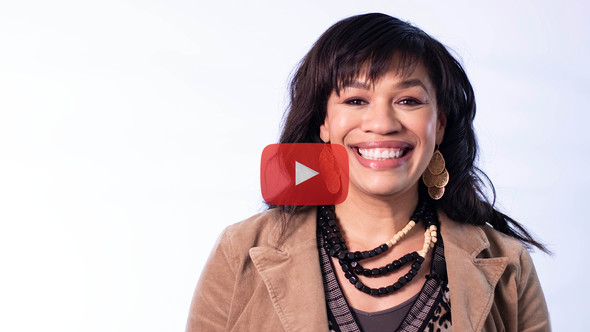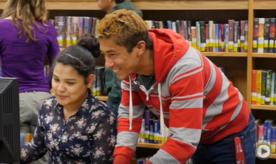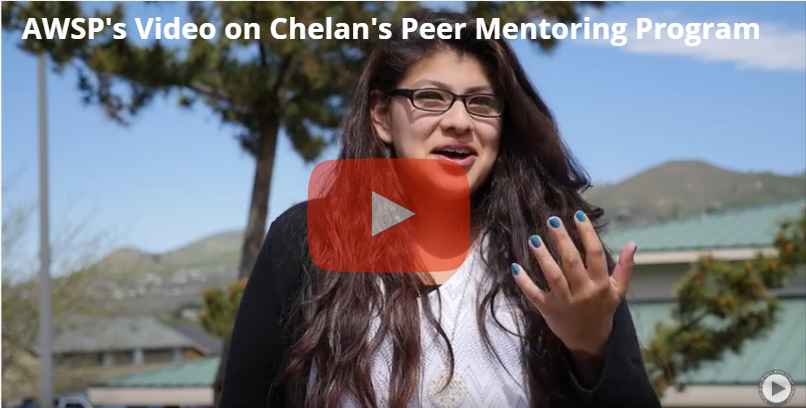|
OSSI’s monthly newsletter provides accessible resources and connects readers to best practices at the state, regional, and local level that are improving student outcomes. Do you have a story to share? Let us know about it!
FOCUS: 9th Grade Success
November 2019


by Sarah Barnes, School & Community Liaison / Academic Success Coordinator
Academic achievement does not typically characterize the students who are served by the High School Success Class at Chelan High School. That usually changes by the time they finish 9th grade. Freshman Nathan improved his GPA last year from 0.9 to 3.3. “This year I made a big change including changing my habits and studying for tests. My mentor is influential because she helped me with my work and kept me in a good mood so that I could focus better. I will use the experience of having a mentor into becoming one for kids who need it most.”
Josh, who increased his GPA from 2.9 to 3.5, reflected, “Having a mentor made me work even harder by CLICK HERE to continue reading
WATCH NOW:
|
 |
 |

Share with us on social media!
Q: How are you building relationships with your 9th graders?
Q: Are you running a summer school bridge program? We want to learn what you’re doing and how it’s going!
Q: What are you doing that is helping 9th graders stay on-track?
Q: Do you have a 9th Grade Success Team? Tell us about it!
@waOSPI #waOSPI
|

by Kaaren Andrews, Director of the Center for High School Success
The Center for High Schools Success (CHSS), part of Stand for Children, launched this fall with the goal of increasing the number of 9th graders on track for high school graduation and college and career readiness. We are proud to already have partnerships in the Yakima Valley (six districts), South King County (two districts), and in Spokane (one district and a public charter school). The work we’re doing helps bring CLICK HERE to continue reading
|

10 Strategies to Increase Family Engagement of American Indian, Alaskan Native, and or Native American Families
1. Make physical spaces reflective
2. Emphasize community connections
3. Embrace Indian and Treaty Law
4. Connect with tribal calendars
5. Connect habits of mind to a culturally appropriate narrative
6. Celebrate successes, especially in Tribal priority areas
7. Use culturally appropriate mechanisms to engage families
8. Be transparent with policies
9. Ensure policies support student learning
10. Connect to ancestral language and culture efforts
Learn More…..
|
Q: How can I access the Healthy Youth Survey results?
A: Check out this quick guide, that will show you how to access the data in several different formats. If you have questions about the Healthy Youth Survey, contact Emily Maughan .

GATE Equity Webinar December 11th:
101: Youth Engagement Strategies with Greg Williamson from DCYF
201:The Science and Theory of Hope: Creating Meaningful Pathways for Youth with Chan Hellman, PhD Oklahoma University
School discipline, substance use, and restraint and isolation training, ESD 105, November 20
WSSDA Annual Conference, Bellevue, November 21-24
WERA Conference, SeaTac, December 4-6
GATE Advisory meeting: Hope, ESD 113, December 10
GATE Equity Webinars, January 8
School discipline, substance use, and restraint and isolation training, ESD 112, January 16th
GATE Advisory meeting: English Learners, ESD 113 February 11
GATE Equity Webinars, February 12
MTSS Fest, SeaTac, May 4-5
|
 |

by Jason Boatwright, Dual Credit Program Supervisor
One of the most common themes we hear from historically underserved students about why they choose not to take a dual credit course is that, “they aren’t for me”. They feel the other kids don’t look like them, don’t seem like them, or are smarter than them. Based on known gaps between different student groups, there is a good chance that they may not look like anyone participating in dual credit. The gaps for historically underserved students persist. Only by our encouragement, and increasing access to these options, can we make a difference and increase equity within dual credit. For more information on increasing equity and student mindset, what options are available, and other resources, please check out our updated dual credit webpage
Adapted cover from One Fish Two Fish Red Fish Blue Fish copyright Dr. Seuss Enterprises L.P. All rights reserved. Used here pursuant to Fair Use
|
October's GATE webinars are now available:
Community Partnerships 101: Leveraging Community to Build a Tiered Support System
Substance Use 201: Importance of Substance Use Prevention for Team Sports
Subscribe to our YouTube Channel to get notifications whenever we post a new webinar!
New Deadline: 4pm, November 21, 2019
Read more on LifeSkills Substance Abuse Prevention Grant
|